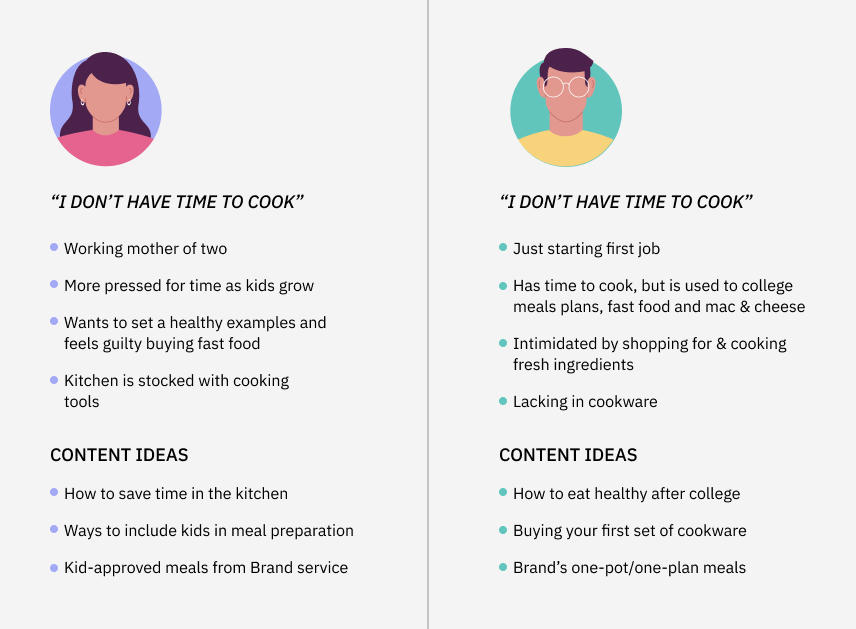UX can make or break your SEO efforts. 5 critical UX signals to save your SEO
July 2, 2020 | Read Time : 3 mins
Table of Contents
Human-centred SEO to achieve lasting ranking results
Here the UX of the website plays an important role. Launching a product requires a lot of capital, and to ensure the money is used appropriately, the business needs to ensure products fit the requirements of a user.
Since then, Google has been focusing on metrics other than keywords. These metrics ensure that users get a holistic experience and manage to achieve their goals as easily.
So here, your website has to ensure all the metrics and bring a balance. The ease at which a user can experience the site’s services and information will result in a high rank in search engines.
How can UX make or break a website?
| UX | Make | Break |
| Content Relevancy | Users spend more quality time on the website | Users heading back to search engine from your website as soon as they can |
| Bounce rate | Users choose to stay and complete CTA | Bouncing from the website before completing any action |
| Retention / Repeat visits | Users coming back to the website for services and resources | Users never visit back the website due to its complexity |
| Conversion Rate | Users turn into leads, and show interest | Users leave the website and don’t sign up, register, or complete a purchase |
Bad Design = Low SEO rank, 5 critical signals
to save your SEO
Click-Through rate
This helps in analyzing where the customers are coming from to the website. Here the website has to ensure its presence on multiple social media channels, which allows them to get users to its website. Why is it important? As it affects dwell time and bounce rate. The website here also has to keep in mind what web page the users should land if they come from a particular social media platform.
Increased Dwell Time
After visiting a website from a particular platform or direct intent search, if the user is directed to some other page instead of the context that was shown to them, then chances are they will opt-out from the website
For example: If users come across a watch ad on social media, they expect to see the details of the watch. However, if the website shows the homepage instead of the watch’s specification page, chances are the user will leave the site and not complete the purchase or take any action. Actions like these increase the dwell time and lower the rank of the website on search engine results.
Delay in load, Mobile Friendliness
People access your website from different devices. It’s the company that has to ensure the site is loading perfectly on every kind of device. Quick load also affects the number of users coming to the website. If the site takes more than 2-3 seconds to load, chances are the users will leave, and if it is consuming more than seven seconds, then that rate will increase to 47%.
Just Keywords & no Smooth Navigation
If the website has all the relevant keywords, chances are it will show up in results, but there is no smooth navigation for users to achieve their goal. There is no point in adding relevant keywords too. Users should be able to navigate easily throughout the website and access search results.
No CTA or post-CTA experience
The website wants users to take action, but it fails to direct users towards that action. CTA should be loud and easily traceable on the website. Users should notice it the first time they land on any page. If the other less important page elements are highlighted and CTA is not, it will not help convert users into leads.
The post-CTA experience is also as necessary as the experience before CTA. When the users complete a course of CTA, they should be informed and rewarded for taking that action. This ensures users have completed the action and builds a connection between the user and the website.
Human-Centred SEO
Blacktruckmedia writes, creating empathy maps can help you climb out of your business-person brain and into the mind of your current or potential customers. Empathy maps go beyond personas by mapping what an individual customer might think/feel, see, hear, say/do, their pain points, and what they have to gain. Consider each of these areas for potential visitors to your website.
Keeping the individual in mind, the content should also be according to the way users will connect the most and help businesses stand out.
For example : The titles of youtube videos play a huge role in making users click on them. When you are struggling with learning a new language, Youtube video titles that attract you the most are, “Learn the language in 10 days”, “5 tips to learn the language”. These titles make you click on the video and explore more. So the content should answer the user’s questions or excite them.

In SEO, user experience is really important. If you want to be successful at SEO, you must ensure that your user experience is excellent. Examples of fantastic User Experience include providing users with a satisfying response to their query, and doing it quickly through a user-friendly website that works on any device.
While search engines evolve over time, more and more businesses are attempting to adapt to new capabilities by integrating two distinct fields to better serve their website’s needs on both ends.
The user experience a user has when surfing your website is referred to as UX. When you employ relevant SEO, you’re putting your company on the right track. You please both Google and your user when you mix solid SEO with good UX.
You’ll be on your road to SEO and UX success if you follow the basic checklist:
- Searching for keywords
- Examining bounce rates
- Using relevant headings
Contact us if you have any questions on how UX and SEO can capture and convert more customers.






